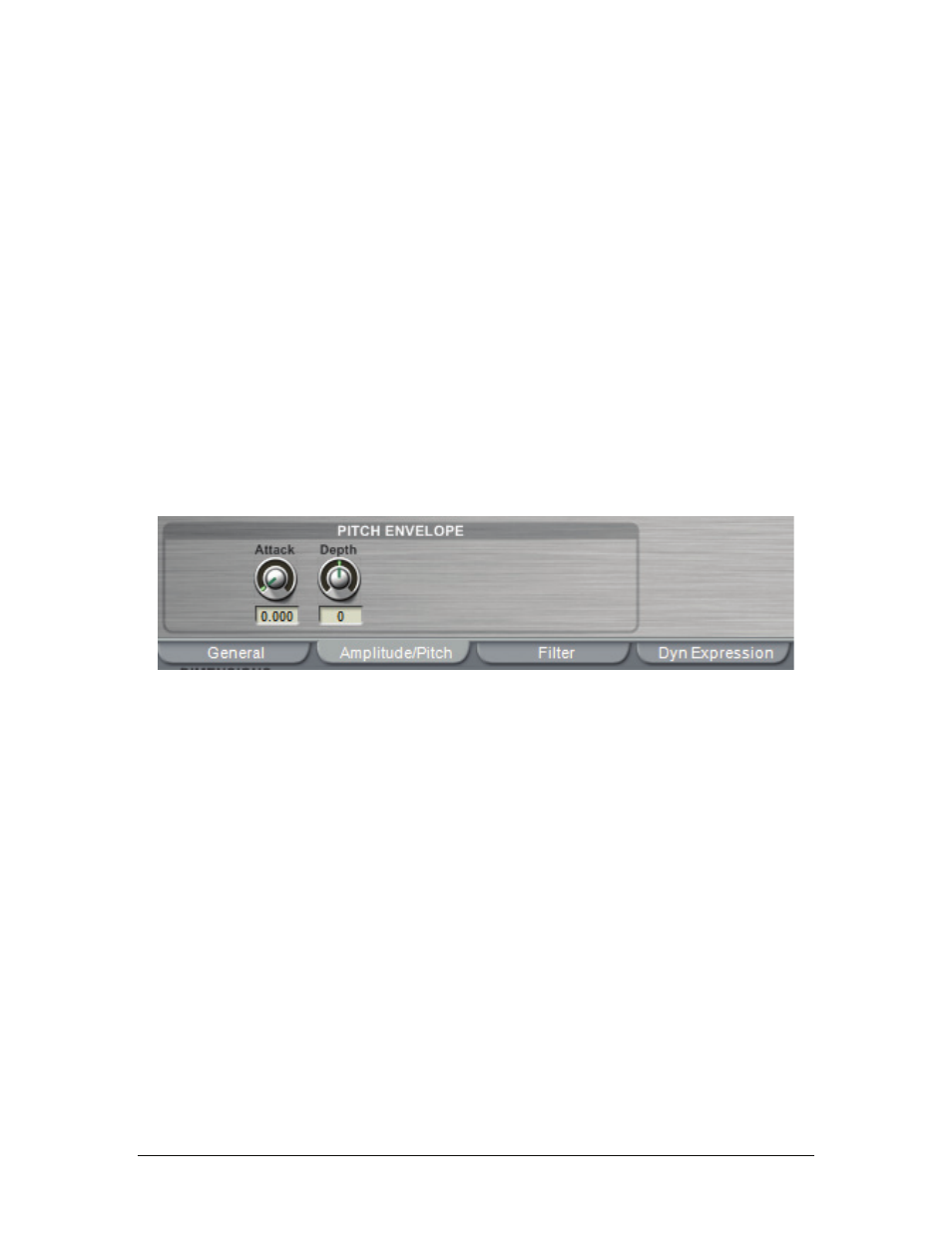Teac GigaStudio 4 User Manual
Page 90

GigaStudio 4 Reference Manual
90
the loop, it will then start the first decay down to the sustain level. This can make for a more realistic envelope
for short looped samples. It gives them a little more of a natural personality despite the artificial looping.
Note: Hold is available on the Amplitude Envelope but not the Filter Envelope.
Decay 2 (0 to 60 seconds, or infinite)
(F) This determines how long the envelope remains at the sustain level. If set to Infinite, the sustain phase will
last as long as the associated key is held down. Note that once the Decay 2 time has elapsed, the Release phase
(described next) will begin, regardless of whether you’re holding down the associated key or not.
Release (0 to 60 seconds)
(G) Release specifies how long it will take for the envelope to fall back to 0 from the current sustain level.
•
If Decay 2 is set to “Infinite,” the release phase will begin when the note is released.
•
If Decay 2 is set between 0 and 60 seconds, then the release phase will start after that amount of time has
elapsed.
•
If you release the note before the Decay time has elapsed, then the release will begin upon releasing the
key.
Pitch Envelope Section
The Pitch envelope has only two parameters.
Attack (0 to 60 seconds)
This parameter sets the time for the pitch envelope to attack up to the original pitch or decay down to it, with
the amount of pitch change set by the Depth control.
Depth (-1200 to 1200 cents)
When centered, the Pitch Envelope has no effect. Turning further counter-clockwise (negative values) sets a
lower initial pitch, which glides up to standard pitch for the duration of the Attack time. Turning further
clockwise (positive values) sets a higher initial pitch, which glides down to standard pitch over the duration
set by the Attack time. The maximum amount of initial pitch deviation is 1200 cents (one octave).